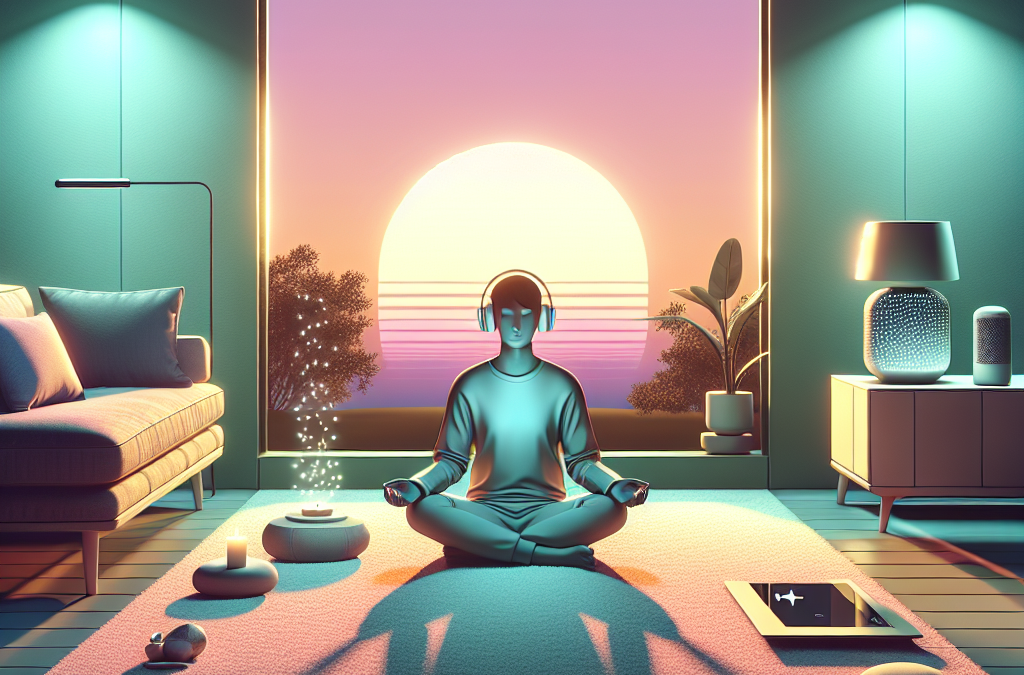How to Use Relaxation Technology to Foster Emotional Healing
In today’s fast-paced world, emotional well-being often takes a backseat to our daily obligations. However, the rise of relaxation technology offers a modern solution to nurture emotional healing. From apps to wearables, these technological advancements provide tools to reduce stress, enhance mindfulness, and promote overall emotional health. This blog post explores how to effectively use relaxation technology to support emotional healing, ensuring you find peace amidst the chaos.
Table of Contents
1. Introduction to Relaxation Technology
2. The Science Behind Emotional Healing
3. Effective Tools and Technologies
4. Integrating Technology into Your Daily Routine
5. Tips for Maximizing Benefits
6. Conclusion
7. FAQs
Introduction to Relaxation Technology
Relaxation technology encompasses a variety of digital tools designed to help individuals unwind and de-stress. From meditation apps like Calm and Headspace to biofeedback devices and VR environments, these technologies aim to enhance emotional well-being by providing structured relaxation sessions. The convenience and accessibility of these tools make it easier than ever to incorporate them into everyday life.
The Science Behind Emotional Healing
Emotional healing is a process that involves reducing stress, managing anxiety, and improving overall mental health. Scientific research has shown that engaging in regular relaxation activities can significantly reduce cortisol levels, the body’s primary stress hormone. Moreover, consistent practice of mindfulness and relaxation techniques can rewire the brain to foster a more positive and resilient mindset.
One study from Harvard Medical School found that mindfulness meditation can lead to changes in the brain’s structure, specifically in areas related to attention, emotional regulation, and self-awareness. This highlights the profound impact that relaxation practices can have on emotional healing.
Effective Tools and Technologies
Meditation Apps
Meditation apps such as Calm, Headspace, and Insight Timer provide guided sessions that cater to various emotional needs, from anxiety relief to sleep improvement. These apps often include features like mood tracking and personalized meditation plans to support your emotional journey.
Wearable Devices
Wearable technology, such as the Apple Watch or Fitbit, offers features like heart rate monitoring and guided breathing exercises. These devices help users stay mindful of their physical responses to stress, encouraging proactive management of emotional health.
Virtual Reality (VR)
VR technology creates immersive experiences that transport users to serene environments, promoting relaxation and mental escape. Applications like Nature Treks VR and Guided Meditation VR offer unique ways to disconnect from stressors and engage in deep relaxation.
Integrating Technology into Your Daily Routine
To fully benefit from relaxation technology, it’s essential to integrate it seamlessly into your daily routine. Start by setting aside a specific time each day for relaxation exercises. Whether it’s during your morning routine or before bed, consistency is key to developing a sustainable habit.
Additionally, consider combining different types of technology to enhance your experience. For example, use a meditation app during your commute and a wearable device to track your progress throughout the day.
Tips for Maximizing Benefits
To get the most out of relaxation technology, consider the following tips:
1. Personalize Your Experience: Choose apps and tools that resonate with you personally. Whether it’s a particular meditation voice or a specific VR environment, personalization can enhance the effectiveness of your relaxation practices.
2. Set Realistic Goals: Start with small, manageable goals. For instance, aim to meditate for five minutes a day and gradually increase the duration as you become more comfortable.
3. Be Patient: Emotional healing is a journey, not a destination. Allow yourself time to adapt to new practices and be patient with your progress.
Conclusion
Relaxation technology offers an innovative approach to emotional healing, providing accessible tools to manage stress and enhance mental well-being. By understanding the science behind these technologies and integrating them into your daily routine, you can foster a healthier emotional state and improve your overall quality of life. So, why not give it a try? Your emotional health deserves the attention and care that relaxation technology can provide. ?
FAQs
Q: Can relaxation technology replace traditional therapy?
A: While relaxation technology is a valuable tool for managing stress and promoting emotional well-being, it is not a substitute for professional therapy. It can complement therapy by providing additional support between sessions.
Q: Are these technologies suitable for everyone?
A: Most relaxation technologies are designed to be user-friendly and accessible to a wide audience. However, individuals with specific mental health conditions should consult with a healthcare professional before using these tools.
Q: How quickly can I expect results?
A: The timeline for seeing results varies from person to person. Some may experience immediate benefits, while others may notice changes over a longer period. Consistency and patience are crucial for maximizing the benefits of relaxation technology.
Roshiwave Meditation Mind Machine
Add CTA sections description.

